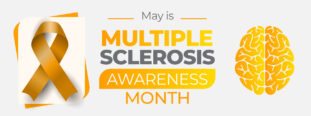AAN REPORT 1: Pregnancy, RIS and a new way of testing
American Academy of Neurology highlights
Women with multiple sclerosis (MS) typically have fewer relapses during pregnancy, but relapses return a few months after the baby is born. For women who breast feed, that relapse risk is postponed until after the baby is weaned. It’s often said that this change in relapse pattern doesn’t have a long-term impact, but a new study suggests otherwise.
Researchers in Buffalo examined a database of women with MS to see how well they did over an average 18-year period (Teter and colleagues. AAN 2013; abstract P02.130). During that time, about one-quarter progressed to EDSS 6 (requiring a cane or other assistance device). But that risk was about one-third lower in women with children compared to women without children. This is the first study to suggest that pregnancy and childbirth may provide some benefit on the MS disease course.
There was a very interesting study from France involving people with radiologically isolated syndrome (RIS) (Lebrun Frenay and colleagues. AAN 2013; abstract P03.236). This is when a person has no MS symptoms or neurological signs, but a doctor happens to see abnormal findings on their MRI suggestive of MS. One way to test people suspected of early MS is to perform a spinal tap (lumbar puncture) to see if there is evidence of inflammatory activity in the central nervous system (CNS). What they look for is a characteristic pattern of antibodies (immunoglobulins) in the cerebrospinal fluid (called oligoclonal bands, or OCBs).
The French researchers found OCBs in 55% of the spinal taps they performed. A new twist was that they also collected people’s tears – and OCBs were also found in 50% of these samples as well. Everyone who had OCBs in their tears also had them in their cerebrospinal fluid. So this type of test could prove to be a simpler, less painful way of identifying who is at risk of MS compared to a lumbar puncture.
Share this article
Facebook Twitter pin it! Email
Related Posts
Back





